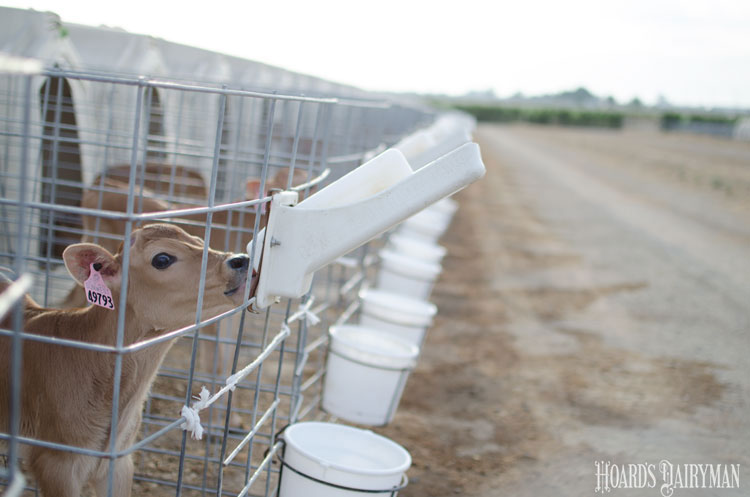
There is nothing more intimidating to me in a kitchen than a pile of dirty dishes. The larger it grows the less I want to deal with it.
Anyone relate?
When it comes to dirty “calf dishes” in the sinks of our barns, we cannot afford to let them sit. That’s because young calves are quite susceptible to bacteria that grow quickly on calf feeding equipment such as buckets, bottles, hoses, and esophageal feeders. Particularly of concern are biofilm buildups that are hard to see and occur even in the best of cleaning scenarios.
“Once a biofilm has formed, it creates a protective outer layer making cleaning efforts more difficult,” shared the Miner Institute’s Kayla Hultquist. “Do not let equipment sit around for hours allowing bacteria to populate and further adhere to surfaces.”
To combat this issue, Hultquist recommends evaluating cleaning protocols on a regular basis and taking bacterial swabs of equipment to evaluate how cleaners are doing.
She also suggests these four tips for getting the best clean possible.
- Pre-rinse the equipment with lukewarm water to remove loose material such as milk and manure before placing into the wash water. If this step is skipped, the hot water will likely denature proteins in the organic matter causing the material to become more sticky and hard to remove.
- Wash the equipment next with water maintained above 120°F. If the water falls below this level, Hultquist warns that organic matter falls out of suspension and back onto equipment. She also recommends washing with a combination of alkaline soap and chlorine and using a brush or sponge to eliminate biofilms.
- Acid rinses as the next step in the washing process play an important protective role. When used after washing they lower the pH of the surface making it less likely for bacteria to accumulate between uses.
- Drying may be the most important step, as bacteria do not grow well in dry environments. Place buckets or other equipment in such a way that water can drain out and so that air contaminates cannot reach the interior of the equipment.

The author is an associate editor. She covers feeding and nutrition, youth activities and heads up the World Dairy Expo Supplement. Maggie was raised on a 150-cow dairy near Valley Center, Kansas, and graduated from Kansas State University with degrees in agricultural communications and animal sciences.







